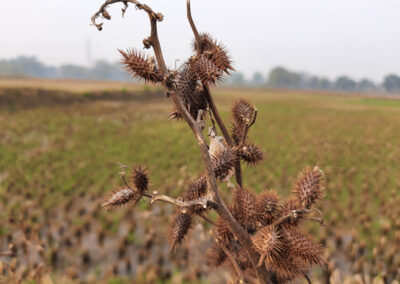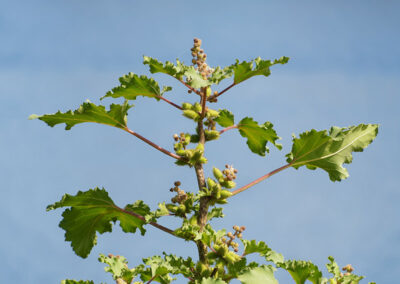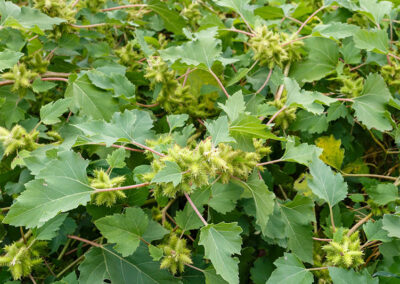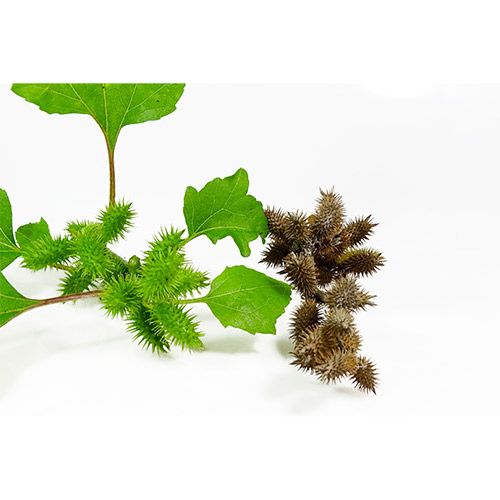
Common Cocklebur

Pollen Type: Weed
Cross-Reactivity: None
HS Allergy Extract: Cocklebur, Common
Family: Compositae
Genus/Species: Xanthium strumarium
Common Names: Cocklebur, Pennsylvania Cocklebur, Clotbur
Distribution: Throughout the United States.
Locations: Cultivated and disturbed or decomposing dry sites in meadows, grasslands, woodlands, farm fields, riverbanks, and roadsides.
Pollinating Period: Last half of August & September. In milder areas some pollination from June into October.
Pollination Method: Wind-pollinated
Description: Common Cocklebur is an annual, weedy herb growing 2’-5’. It’s rough to touch and often much branched. Its leaves are thick and sharp, 3-5 lobed with serrated edges. Leaf-blades are 2”-5” long, growing on stems (petioles) of equal length. Staminate (male) flower heads are semi-spherical and grow in clusters at the end of the branch. The pistillate (female) flower heads are dual-flowered and develop where the leaf attaches to the stem below the staminate (male) clusters. Staminate (male) clusters drop soon after pollination, leaving the troublesome burs to ripen. The body of the bur is cylindrical, 1/2”-3/4”, and covered with sharp, hooked spines 1/4”-5/16” long. Two stout hooked beaks form the tip of the bur.





